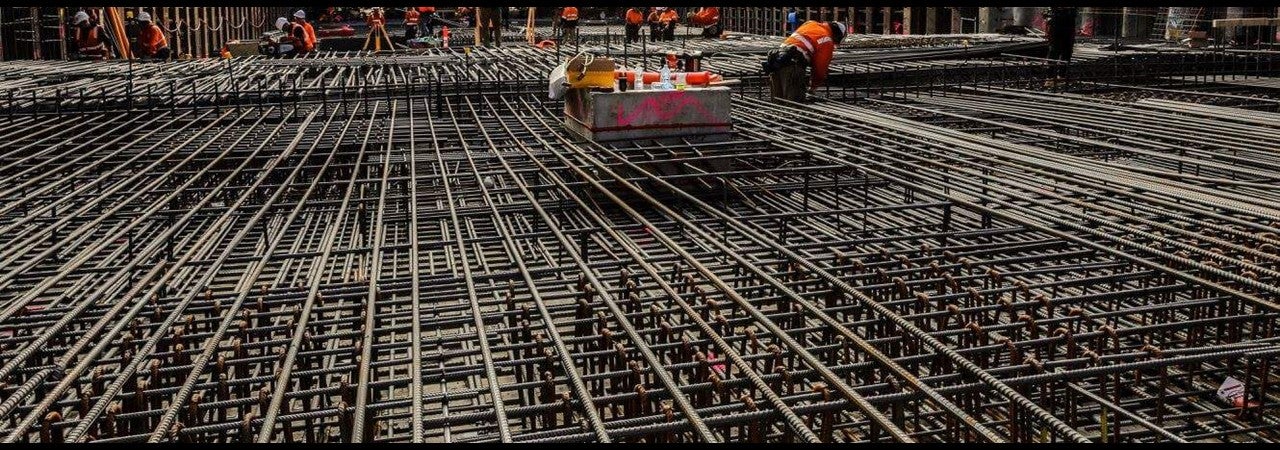
The Victorian government is on track to achieve its ambitious plan to remove 50 railway level crossings by 2022.
InfraBuild (formerly LIBERTY OneSteel) is working closely with construction partners to deliver the country’s largest-ever railway crossing removal program. In doing so, it is helping the Victorian government with its mission to maximise local industry participation and stimulate economic growth by encouraging the creation of local jobs.
The Victorian government has committed to removing 50 dangerous and congested level crossings in the Melbourne metropolitan area over the course of eight years. The aim is to improve safety at the crossings for drivers and pedestrians, reduce congestion on approach roads and deliver a more effective train service across the city. The program also intends to revitalise local communities with several Melbourne train stations undergoing rebuilds.
A dedicated Level Crossing Removal Authority (LXRA) has been established and tasked with planning and executing each level crossing removal efficiently and effectively. In addition, it is responsible for delivering the South Morang train line extension to Mernda that will cater to the significant population growth in Melbourne’s north, plus overseeing the Hurstbridge rail line upgrade project and the construction of a new train storage facility in Seaford, south-east of Melbourne.
Kevin Devlin, LXRA CEO, says the program is tracking well and is ahead of schedule to deliver all 50 level crossings by the end of 2022.
“We’ve completed 10 level crossings and rebuilt eight train stations in the first two years,” he said. “Another 16 level crossings are currently under construction and we’re hoping that by the end of next year [2018] we’ll have well exceeded the government’s target to have 20 level crossings complete.
“We’ve got approximately 1 million work-hours a month going on at the moment so there’s a huge amount of effort going into the project.”
Benefits across the board
Melbourne’s level crossings are an historical remnant from a time when the city’s roads weren’t as busy as they are now. The flat topography of the city meant that level crossings were constructed instead of using bridges or underpasses. These crossings have since become bottlenecks as traffic on Melbourne’s roads has increased. They have also been the site of several fatal accidents. This year marks the ten-year anniversary of a train disaster that claimed the lives of 11 people at a level crossing several kilometres north of Kerang in northern Victoria.
An amount of $2.4 billion was set aside in the 2015–2016 Victorian state budget to remove the first 20 level crossings. Completion of the 30 remaining crossings is expected to cost $6 billion and will be funded through the privatisation of the Port of Melbourne.
The Victorian government has set its sights on ridding the state of its level crossings in the space of two parliamentary terms.
“No government has ever removed this many level crossings, this quickly,” said Public Transport Minister Jacinta Allan in May. “We have set a cracking pace removing level crossings, and we won’t let it slow down. Our unprecedented investment will reduce congestion, improve public transport and save lives – and create thousands of jobs along the way.”
Boost to local industry
As well as improving Melbourne’s road and rail networks, the government is confident the project will provide a significant boost to local industry. The LXRA has made a commitment to the government’s Victorian Industry Participation Policy (VIPP), through which it aims to generate local jobs and boost economic activity. Included in the VIPP’s minimum local content requirements is a commitment to maximise the use of Australian steel products in each of the crossing removal projects. There has also been a reduction in the threshold for major infrastructure projects, new buildings and facilities that require local content to $50 million in order to benefit local suppliers.
Kevin Devlin says the LXRA has embraced the push to utilise local industry and assist social enterprises with the work they do.
“Because the level crossings program and the expansion of the rail network involves a multi-billion dollar investment, there’s a great opportunity to use that momentum and that volume of work to pull some other policy levers,” he said. “Through our tender process we aim to drive local participation and assist with growing jobs throughout the supply chain, whether that be offering employment to indigenous workers, or hiring people from disadvantaged backgrounds or the long-term unemployed.”
Devlin says early engagement with the supply chain has been a factor in the success of the LXRA’s local content strategy and that project teams have aimed to provide supply chain partners with visibility of design, volumes and timing to in order to meet their targets.
“The level crossings project is moving at an accelerated pace so we’ve needed to give all our large-quantity suppliers the time to gear their businesses to respond to demand.”
He adds that steel is playing an inherent role in the infrastructure the LXRA is overseeing.
“Our organisation has an interest in building sustainable assets that can withstand generations of use, so a quality product is critically important. We need to ensure the life cycle costs of these assets are as low as possible and that they last for the time they’re intended to.
“That durability of the asset is incredibly important.”
For more information on the Victorian Level Crossing Removal project, click here.
Please contact us for any feedback or media enquiries about this content.
Subscribe to the
InfraBuild newsletter
Receive regular updates on news, case studies as well as the latest products and services.
